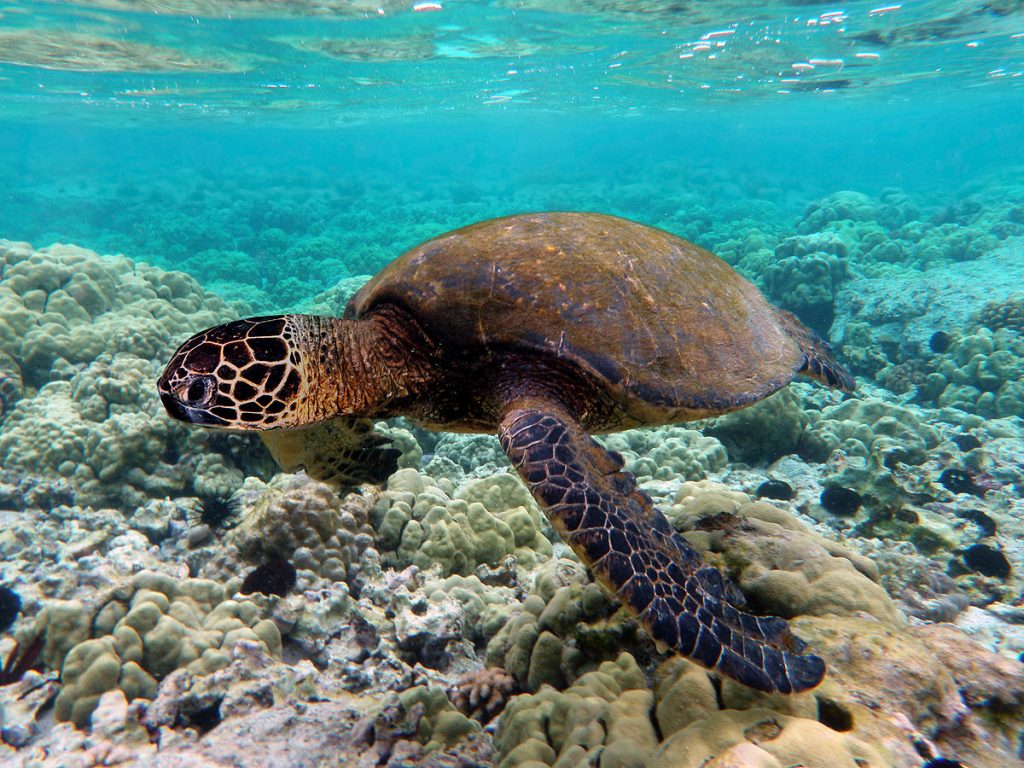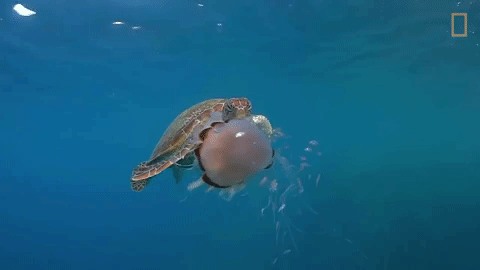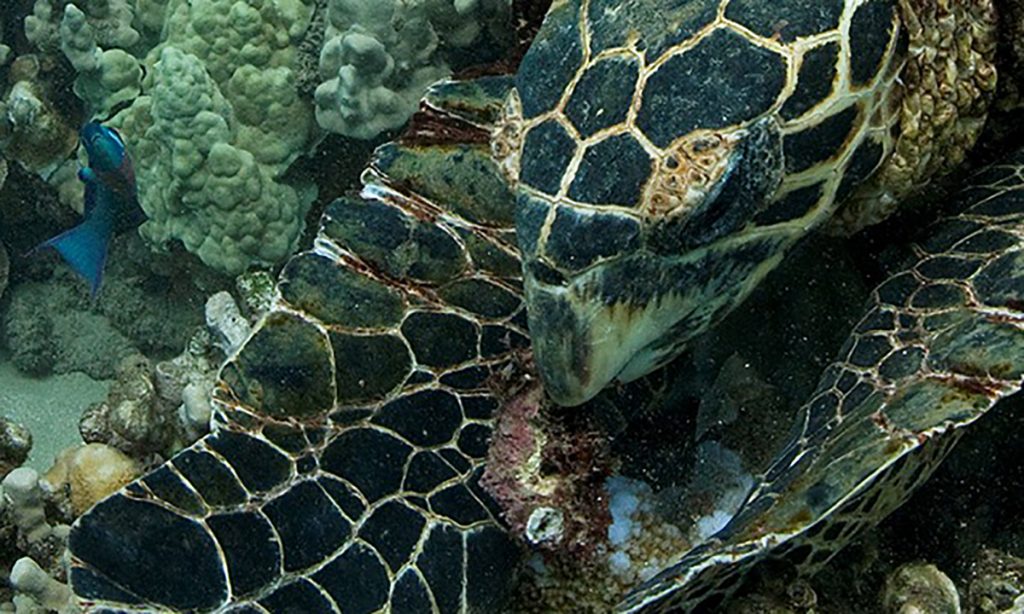
Sea turtles are specially designed for swimming: their flippers are incredibly good at dispersing water, propelling them through the water for miles at a time. However, those fingerless limbs typically don’t help much when it comes to handling their food … or so scientists thought until now.
While they typically rely on just their mouths, a new study published in the journal Peer J reveals that turtles are surprisingly adept at using their limbs to forage for, capture, grasp and transport prey in ways usually associated with more evolved mammals. The study, led by Monterey Bay Aquarium researchers Jessica Fujii and Dr. Kyle Van Houtan, suggests that these behaviors are much more common in marine tetrapods than previously thought.

The researchers analyzed previous studies, as well as online footage of marine turtles foraging in the wild — including a green turtle carrying a jellyfish almost the same size as its body, a loggerhead turtle rolling a scallop on the seafloor to open its shell and a hawkbill turtle using a reef to gain leverage to rip off an anemone.
“With a highly intelligent, adaptive social animal, we expect these things to happen,” Van Houtan said in a blog post by the Monterey Bay Aquarium. “With sea turtles, it’s different; they never meet their parents. They’re never trained to forage by their mom. It’s amazing that they’re figuring out how to do this without any training, and with flippers that aren’t well adapted for these tasks.”

Sea turtles have long been thought to be incapable of such complex behaviors because their brains lack a developed frontal cortex. But now researchers are wondering if this behavior could have evolved in turtles as much as 70 million years before other marine tetrapods.
Fujii, the study’s lead author, is also a member of the Monterey Bay Aquarium’s sea otter research team. Studying sea otter behaviors like foraging and tool use led her to examine the way sea turtles have evolved to use their limbs.
This examination of sea turtles could help move Fujii’s sea otter research forward, particularly the aquarium’s program to raise orphaned pups and reintroduce them to the wild. As researchers attempt to understand the best ways to help the baby otters learn to forage and feed themselves, observing sea turtles may be the best way to figure it out.
Watch how this sea turtle uses his flippers to karate chop a jellyfish:




